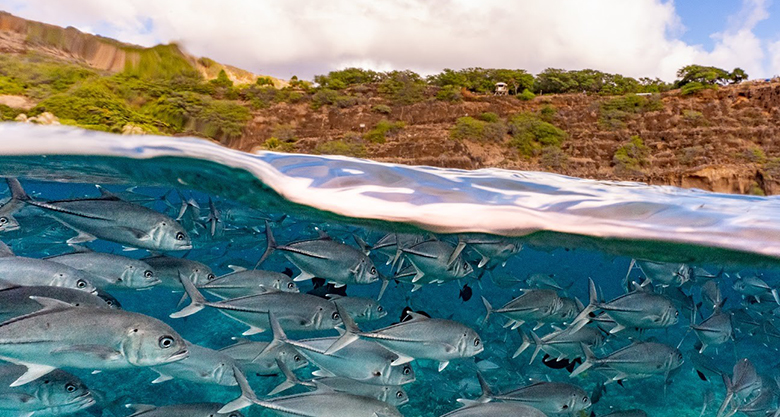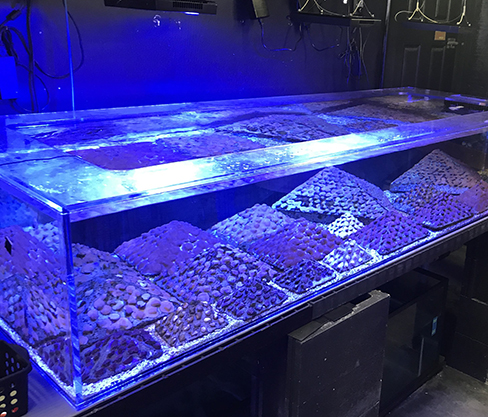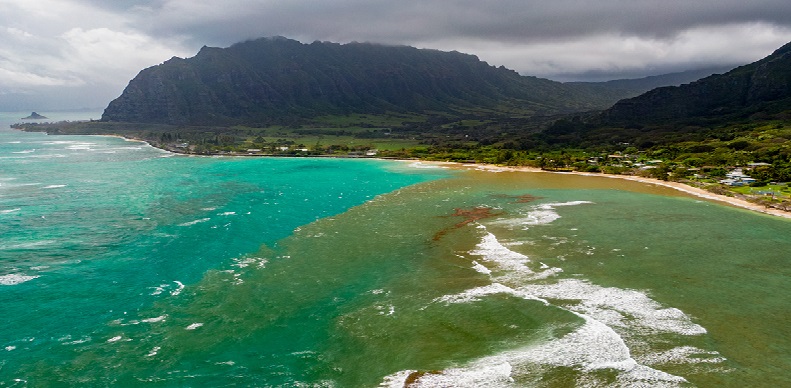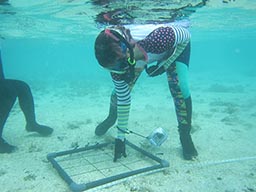- ABOUT US
- PROGRAM AREAS
- CONSERVATION APPROACH
- EDUCATION
- MULTIMEDIA
Coral Management Fellow Contributes to Hawai'i Division of Aquatic Resources' Makai Restoration Plan

The Fellow
Bert Weeks, National Coral Reef Management Fellowship class of 2020-2021, was born and raised in Hawai'i on the Island of O'ahu and returned home after completing his master's degree at Scripps Institution of Oceanography at the University of California San Diego. During his two-year fellowship, he worked at the State of Hawai'i Department of Land and Natural Resources (DLNR) Division of Aquatic Resources (DAR). One of his focus areas was to improve coral restoration in Hawai'i through the creation of a state-wide coral restoration action plan.
The Hawai'i Department of Aquatic Resources
The Hawai'i Department of Land and Natural Resources (DLNR) Division of Aquatic Resources (DAR) is a government agency that is responsible for managing the state's aquatic resources, including coral reefs and other marine and freshwater ecosystems. The division's mission is to protect, conserve, and manage Hawaii's aquatic resources through research, education, and management activities. The division's approach to coral reef management includes the development of management plans, monitoring and assessment of coral reef health, and the implementation of conservation and restoration projects. The division also manages and regulates fishing, and collaborates with other government agencies, non-profit organizations, and communities to ensure the long-term sustainability of Hawaii's aquatic resources.

The Restoration Plan
Bert worked directly with DAR and its partners to create the first Makai Restoration Action Plan to address impacts from coral bleaching. This plan lays out a general framework for goals, general geographic areas, and interventions for future coral restoration in Hawai'i. Bert created a story map that describes the plan's purpose and strategy in a compelling, easily digestible way using photos and videos that he has taken around Hawai'i. He says, “I tried to simplify a highly technical and dense document into a form that people can understand. We can't expect the general public to read hundreds of pages, but it is important that they know what we are proposing, so they can give input into the process.” The plan was created using the Reef Resilience Network's Manager's Guide to Coral Restoration Planning and Design with funding from NOAA and supports the Hawai'i Coral Reef Strategy 2030.

The Fellowship
The National Coral Reef Management Fellowship provides professional experience for the individual fellows in coastal and coral reef resources management while providing state and territorial coral reef management agencies highly qualified candidates whose education and work experience meet each jurisdiction's specific needs. The program is a partnership between NOAA's Coral Reef Conservation Program, the U.S. Department of Interior Office of Insular Affairs, Nova Southeastern University's Halmos College of Natural Sciences and Oceanography, and the U.S. Coral Reef All Islands Committee.

About Us

The NOAA Coral Reef Conservation Program was established in 2000 by the Coral Reef Conservation Act. Headquartered in Silver Spring, Maryland, the program is part of NOAA's Office for Coastal Management.

The Coral Reef Information System (CoRIS) is the program's information portal that provides access to NOAA coral reef data and products.
Work With US
U.S. Coral Reef Task Force
Funding Opportunities
Employment
Fellowship Program
Contracting Assistance
Graphic Identifier
Featured Stories Archive

Access the archive of featured stories here...
Feedback
Thank you for visiting NOAA’s Coral Reef Conservation Program online. Please take our website satisfaction survey. We welcome your ideas, comments, and feedback. Questions? Email coralreef@noaa.gov.
Stay Connected
Contact Us
NOAA’s Coral Reef Conservation Program
SSMC4, 10th Floor
1305 East West Highway
Silver Spring, MD 20910
coralreef@noaa.gov
